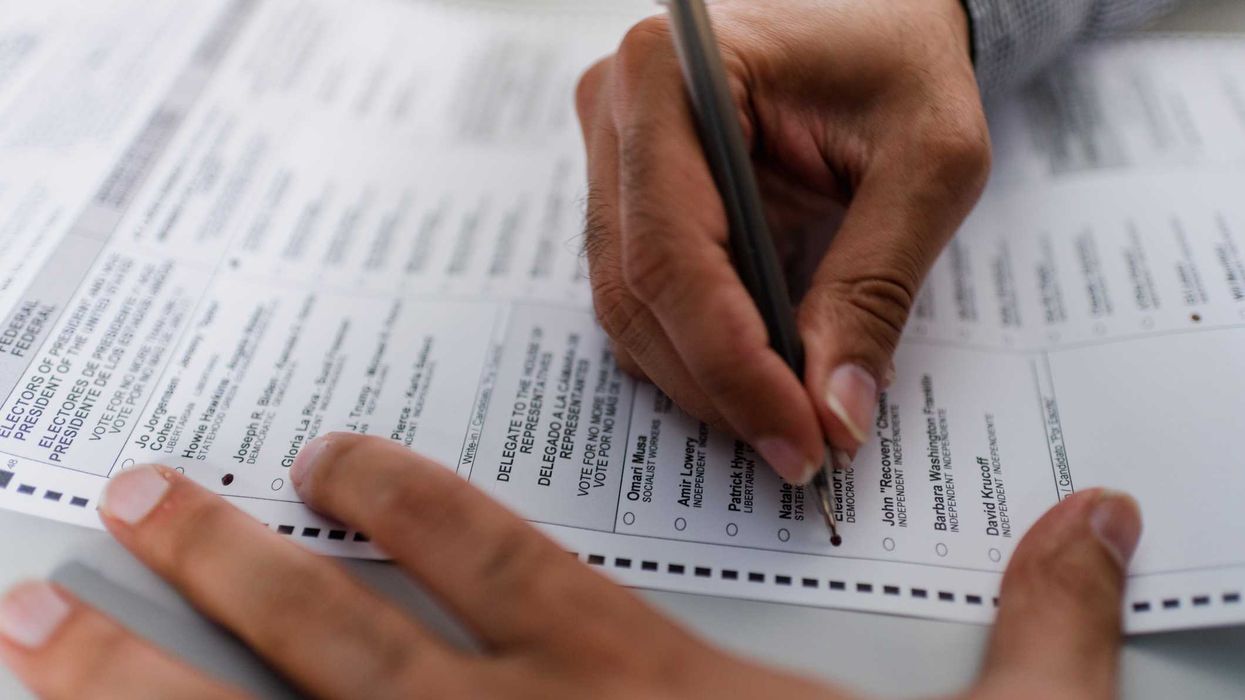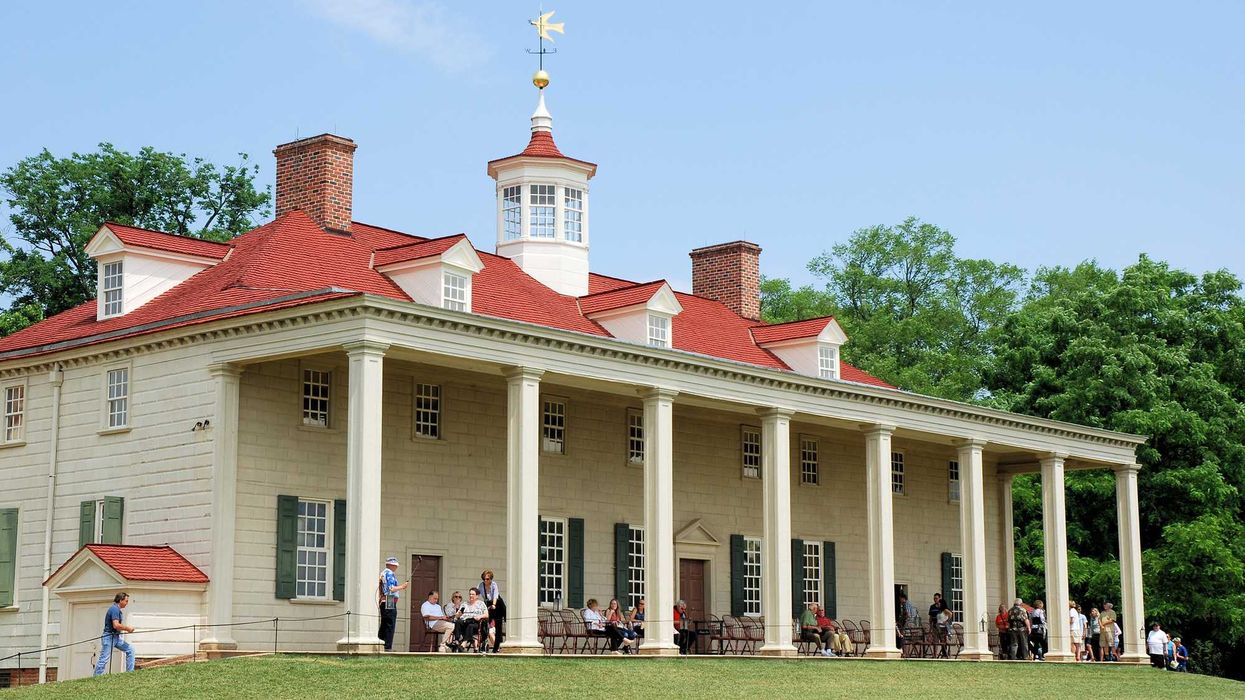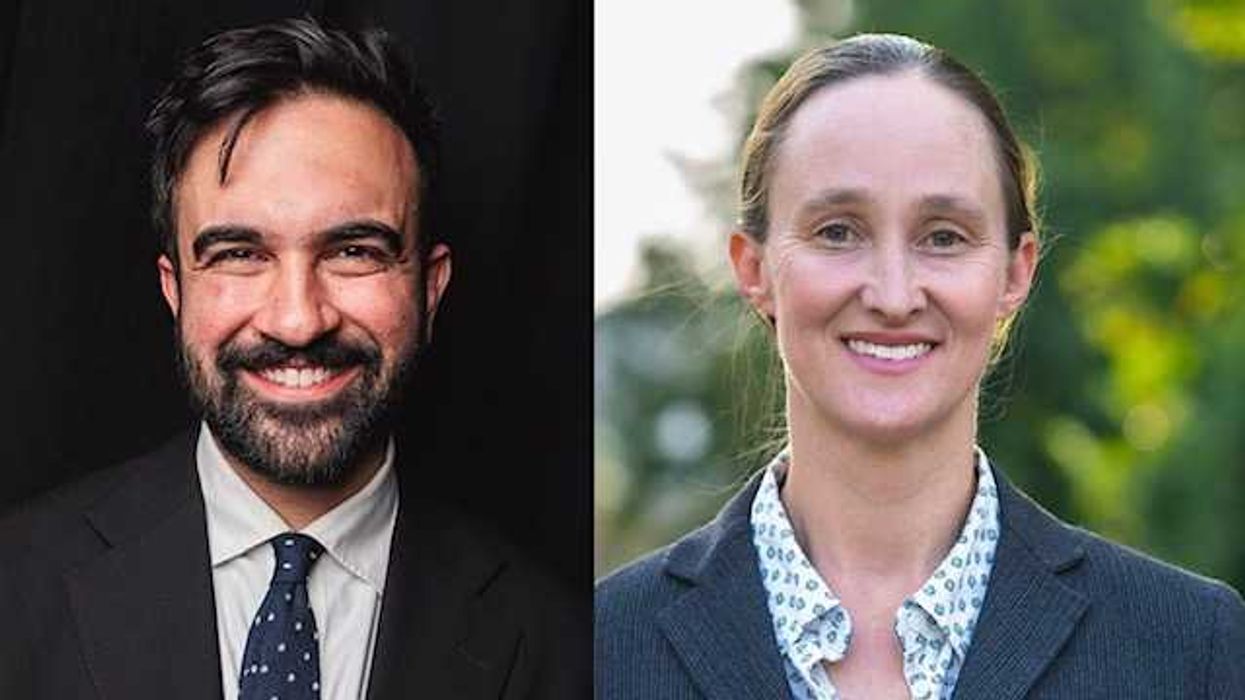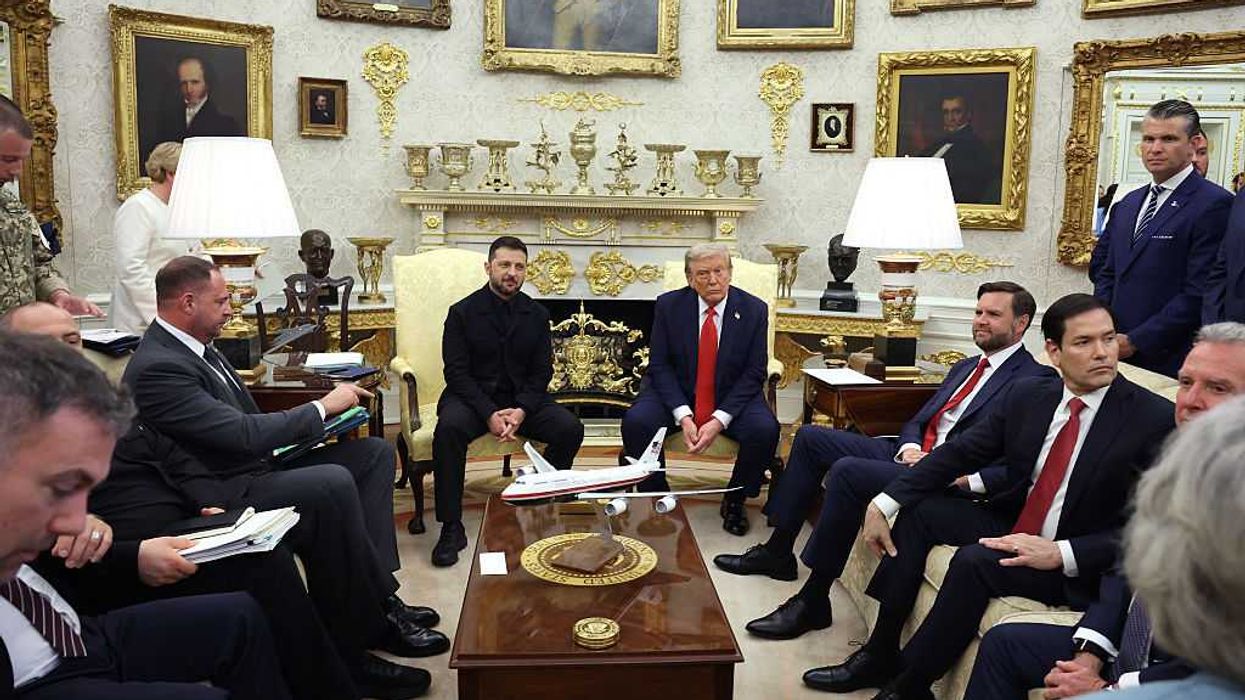What if we could reinvent the public square in the context of our elections so candidates can genuinely earn the attention to compete? At Pluribus we believe a more meritocratic and modern public square would: 1. Increase participation and informed decision-making by the electorate. 2. Lower the barrier to entry so there is greater competition and more diversity of candidates. 3. Increase prioritization of broad public interests.
Site Navigation
Search
Latest Stories
Start your day right!
Get latest updates and insights delivered to your inbox.
Top Stories
Latest news
Read More

A pregnant woman receives a COVID-19 vaccine at a pharmacy in Pennsylvania in 2021. Hannah Beier/Reuters.
Hannah Beier/Reuters
Amid Confusing CDC Guidance About Vaccines, Study Highlights New Risk of COVID-19 During Pregnancy
Dec 04, 2025
In the first 18 months of the COVID-19 pandemic, tens of thousands of pregnant women were wheeled into hospitals where they fought for their lives and the lives of the babies they carried.
It took the Centers for Disease Control and Prevention until August 2021, eight months after the first vaccine was administered, to formally recommend the COVID-19 shot for pregnant and breastfeeding mothers. The CDC had found that pregnant women with COVID-19 faced a 70% increased risk of dying, compared with those who weren’t. They also faced an increased risk of being admitted to the intensive care unit, needing a form of life support reserved for the sickest patients, and delivering a stillborn baby. In recommending the vaccine, the CDC assured them that the shot was safe and did not cause fertility problems.
ProPublica examined the harm caused by the delay in rolling out and endorsing the vaccine for pregnant mothers. Federal officials at the time told us that they wanted to ensure “an abundance of evidence” before issuing guidance.
But a surprising turn of events this summer reversed that guidance.
In May, Robert F. Kennedy Jr., the Health and Human Services secretary and a longtime vaccine critic, announced on X that “the COVID vaccine for healthy children and healthy pregnant women has been removed from @CDCgov recommended immunization schedule. Bottom line: it’s common sense and it’s good science. We are now one step closer to realizing @POTUS’s promise to Make America Healthy Again.”
The next month, Kennedy fired all 17 sitting members of the CDC’s Advisory Committee on Immunization Practices and replaced them with a selection of hand-picked members. The committee has since shifted its guidance, encouraging people to decide on their own whether to get the shot and to consider individual risk factors.
Doctors and national medical organizations said the new guidance from the CDC has caused confusion among patients and could put pregnant women and their babies at risk of severe illness or hospitalization.
“COVID-19 infection during pregnancy increases the risk of preterm birth, preeclampsia, and stillbirth,” read a statement from the Society for Maternal-Fetal Medicine.
The organization, as well as the American College of Obstetricians and Gynecologists, the nation’s leading professional organization for OB-GYNs, reiterated their recommendations that all those who are pregnant or breastfeeding receive the updated vaccine and booster, regardless of the trimester they’re in.
ProPublica found that though unvaccinated women faced devastating risks, the COVID-19 vaccine had been commandeered by disinformation and doubt. Pharmaceutical companies and government officials had not ensured that pregnant women were included in the early development of the vaccine, despite federal guidance on how to safely include pregnant and breastfeeding people in biomedical research.
The HHS’ communications director, Andrew G. Nixon, defended the federal government’s actions, saying in a statement: “ACIP’s recommendation applies to all individuals six months and older. It includes an emphasis that the risk-benefit of vaccination in individuals under age 65 is most favorable for those who are at an increased risk for severe COVID-19 and lowest for individuals who are not at an increased risk, according to the CDC list of COVID-19 risk factors.”
Pregnancy is listed as a condition that can increase risk.
In the midst of the backlash against the CDC’s guidance, a recent Harvard University study highlights a new risk of COVID-19 during pregnancy. In a rare look at the children of women who contracted COVID-19 while pregnant, the study found that they may be at increased risk for autism and other neurodevelopmental diagnoses by age 3.
Researchers, who followed the children via their medical records from birth through their toddler years, observed some initial developmental delays at 12 months and again around 18 months, said Dr. Andrea Edlow, one of the study’s senior authors and an OB-GYN at Harvard Medical School.
“We were seeing speech and motor delays, but we really didn’t know if they were going to be persistent or evolve into other diagnoses like autism, or if children were maybe going to catch up,” Edlow said. “But that, unfortunately, hasn’t been the case.”
Edlow treated many pregnant patients during the pandemic, including some who experienced a life-threatening condition known as a cytokine storm. They often had high fevers and severe inflammation for several days. The condition, she remembers thinking, couldn’t be good for the placenta or the developing fetal brain.
Edlow and her team studied more than 18,000 live births to mothers who delivered between March 2020 and May 2021. Of those, more than 800 had been diagnosed with COVID-19. What surprised them was that 16.3% of those babies received a neurodevelopmental diagnosis by three years, compared with 9.7% of the babies who were not exposed to COVID-19 in utero. That was a statistically significant finding. During the period covered by the study, the CDC had not yet come out with its formal recommendation for pregnant women to get the COVID-19 vaccine, and as such, most of the mothers were unvaccinated.
The children of mothers who contracted COVID-19 in the third trimester, a critical time for fetal brain development, and boys had an even higher risk. The male placenta and fetal brain, the researchers wrote, are more susceptible to a mother’s immune response to COVID-19 and other infections.
“I know it’s alarming,” Edlow said.
The researchers, she said, are not out to stoke fear. While the risk of autism is increased, Edlow said, the overall risk still remains low. The study underscores the importance of monitoring children born to mothers who had COVID-19 while pregnant for neurodevelopmental conditions.
Edlow encouraged pregnant women to do everything they can to avoid getting COVID-19, including wearing masks, avoiding crowded indoor spaces and getting vaccinated and boosted.
“COVID is a real problem that poses risk to the mom in pregnancy and to the child,” she said. “And it’s still worth preventing, even at this point.”
Dr. Naima Joseph worries about how the reversal of the COVID-19 vaccine recommendation for pregnant patients will affect the health of the country, particularly its most vulnerable residents, women and children.
She remembers standing in line during the pandemic to get her COVID-19 vaccine when her husband, who is also a doctor, turned to her.
“Are you sure you should be doing this?” he asked.
Joseph, a maternal fetal medicine doctor at Boston Medical Center who serves on ACOG’s Immunization, Infectious Disease, and Public Health Preparedness Expert Work Group, paused. She was pregnant with twins. Like so many mothers, what she cared about most in this world was protecting her babies, but she also treated many pregnant patients sick with COVID-19 who spent months fighting for their lives from a hospital bed. Some died or lost their babies.
“Yes,” she replied to her husband before getting the shot.
Amid Confusing CDC Guidance About Vaccines, Study Highlights New Risk of COVID-19 During Pregnancy was originally published by ProPublica and is republished with permission.
Keep ReadingShow less
Recommended

A pregnant woman receives a COVID-19 vaccine at a pharmacy in Pennsylvania in 2021. Hannah Beier/Reuters.
Hannah Beier/Reuters
Amid Confusing CDC Guidance About Vaccines, Study Highlights New Risk of COVID-19 During Pregnancy
Dec 04, 2025
In the first 18 months of the COVID-19 pandemic, tens of thousands of pregnant women were wheeled into hospitals where they fought for their lives and the lives of the babies they carried.
It took the Centers for Disease Control and Prevention until August 2021, eight months after the first vaccine was administered, to formally recommend the COVID-19 shot for pregnant and breastfeeding mothers. The CDC had found that pregnant women with COVID-19 faced a 70% increased risk of dying, compared with those who weren’t. They also faced an increased risk of being admitted to the intensive care unit, needing a form of life support reserved for the sickest patients, and delivering a stillborn baby. In recommending the vaccine, the CDC assured them that the shot was safe and did not cause fertility problems.
ProPublica examined the harm caused by the delay in rolling out and endorsing the vaccine for pregnant mothers. Federal officials at the time told us that they wanted to ensure “an abundance of evidence” before issuing guidance.
But a surprising turn of events this summer reversed that guidance.
In May, Robert F. Kennedy Jr., the Health and Human Services secretary and a longtime vaccine critic, announced on X that “the COVID vaccine for healthy children and healthy pregnant women has been removed from @CDCgov recommended immunization schedule. Bottom line: it’s common sense and it’s good science. We are now one step closer to realizing @POTUS’s promise to Make America Healthy Again.”
The next month, Kennedy fired all 17 sitting members of the CDC’s Advisory Committee on Immunization Practices and replaced them with a selection of hand-picked members. The committee has since shifted its guidance, encouraging people to decide on their own whether to get the shot and to consider individual risk factors.
Doctors and national medical organizations said the new guidance from the CDC has caused confusion among patients and could put pregnant women and their babies at risk of severe illness or hospitalization.
“COVID-19 infection during pregnancy increases the risk of preterm birth, preeclampsia, and stillbirth,” read a statement from the Society for Maternal-Fetal Medicine.
The organization, as well as the American College of Obstetricians and Gynecologists, the nation’s leading professional organization for OB-GYNs, reiterated their recommendations that all those who are pregnant or breastfeeding receive the updated vaccine and booster, regardless of the trimester they’re in.
ProPublica found that though unvaccinated women faced devastating risks, the COVID-19 vaccine had been commandeered by disinformation and doubt. Pharmaceutical companies and government officials had not ensured that pregnant women were included in the early development of the vaccine, despite federal guidance on how to safely include pregnant and breastfeeding people in biomedical research.
The HHS’ communications director, Andrew G. Nixon, defended the federal government’s actions, saying in a statement: “ACIP’s recommendation applies to all individuals six months and older. It includes an emphasis that the risk-benefit of vaccination in individuals under age 65 is most favorable for those who are at an increased risk for severe COVID-19 and lowest for individuals who are not at an increased risk, according to the CDC list of COVID-19 risk factors.”
Pregnancy is listed as a condition that can increase risk.
In the midst of the backlash against the CDC’s guidance, a recent Harvard University study highlights a new risk of COVID-19 during pregnancy. In a rare look at the children of women who contracted COVID-19 while pregnant, the study found that they may be at increased risk for autism and other neurodevelopmental diagnoses by age 3.
Researchers, who followed the children via their medical records from birth through their toddler years, observed some initial developmental delays at 12 months and again around 18 months, said Dr. Andrea Edlow, one of the study’s senior authors and an OB-GYN at Harvard Medical School.
“We were seeing speech and motor delays, but we really didn’t know if they were going to be persistent or evolve into other diagnoses like autism, or if children were maybe going to catch up,” Edlow said. “But that, unfortunately, hasn’t been the case.”
Edlow treated many pregnant patients during the pandemic, including some who experienced a life-threatening condition known as a cytokine storm. They often had high fevers and severe inflammation for several days. The condition, she remembers thinking, couldn’t be good for the placenta or the developing fetal brain.
Edlow and her team studied more than 18,000 live births to mothers who delivered between March 2020 and May 2021. Of those, more than 800 had been diagnosed with COVID-19. What surprised them was that 16.3% of those babies received a neurodevelopmental diagnosis by three years, compared with 9.7% of the babies who were not exposed to COVID-19 in utero. That was a statistically significant finding. During the period covered by the study, the CDC had not yet come out with its formal recommendation for pregnant women to get the COVID-19 vaccine, and as such, most of the mothers were unvaccinated.
The children of mothers who contracted COVID-19 in the third trimester, a critical time for fetal brain development, and boys had an even higher risk. The male placenta and fetal brain, the researchers wrote, are more susceptible to a mother’s immune response to COVID-19 and other infections.
“I know it’s alarming,” Edlow said.
The researchers, she said, are not out to stoke fear. While the risk of autism is increased, Edlow said, the overall risk still remains low. The study underscores the importance of monitoring children born to mothers who had COVID-19 while pregnant for neurodevelopmental conditions.
Edlow encouraged pregnant women to do everything they can to avoid getting COVID-19, including wearing masks, avoiding crowded indoor spaces and getting vaccinated and boosted.
“COVID is a real problem that poses risk to the mom in pregnancy and to the child,” she said. “And it’s still worth preventing, even at this point.”
Dr. Naima Joseph worries about how the reversal of the COVID-19 vaccine recommendation for pregnant patients will affect the health of the country, particularly its most vulnerable residents, women and children.
She remembers standing in line during the pandemic to get her COVID-19 vaccine when her husband, who is also a doctor, turned to her.
“Are you sure you should be doing this?” he asked.
Joseph, a maternal fetal medicine doctor at Boston Medical Center who serves on ACOG’s Immunization, Infectious Disease, and Public Health Preparedness Expert Work Group, paused. She was pregnant with twins. Like so many mothers, what she cared about most in this world was protecting her babies, but she also treated many pregnant patients sick with COVID-19 who spent months fighting for their lives from a hospital bed. Some died or lost their babies.
“Yes,” she replied to her husband before getting the shot.
Amid Confusing CDC Guidance About Vaccines, Study Highlights New Risk of COVID-19 During Pregnancy was originally published by ProPublica and is republished with permission.
Keep ReadingShow less
Chicago Youth Find Safety and Strength in Humboldt Park Boxing Gym
Dec 04, 2025
CHICAGO– On almost any given night, around 20 kids strap on boxing gloves at the Puerto Rican Cultural Center on Division Street in Humboldt Park, a neighborhood long recognized as the heart of Chicago’s Puerto Rican community. Hip-hop music blares over the thud of bag punches as mostly high schoolers use the center as a safe haven for exercise.
The gym, Battle Bandera, features a boxing ring, weighted bags, jump ropes and mats. The walls are lined with both a code of conduct and artwork inspired by Puerto Rico and the Windy City. The gym seems as if it has always been about athletics, but that’s not the case.
According to Battle Bandera’s Instagram page, the program provides group boxing training to youths referred by Cook County Juvenile Probation officers, Restorative Justice Community Courts, Chicago Public Schools and the Alternative Schools Network. All athletes are paired with a case manager who offers mentorship, goal planning and access to resources, as well as a certified Restorative Justice Peace Circle facilitator who leads discussions aimed at building stronger community awareness.
“I built this gym. This whole place was desks and chairs,” said Jordan Geary, a former collegiate boxer at the University of Nevada, Reno, and center manager for Battle Bandera. “We cleared it out and built the ring by hand. Everything you see in here, we fundraised for and built ourselves about a year and a half ago.”
Geary, now a Master of Social Work student at the University of Illinois Chicago, loves to see the kids bonding beyond the ring. The center is designed to be a resource, but some believe it’s all they have.
“It’s literally my life. It’s all I do — school and boxing,” said Jeremiah Robinson, a 19-year-old who has been coming to the center for the past year and aspires to box in college.
Robinson said the start of the session is most important.
“[I’m] mentally getting ready for what I’m about to go through. Anything I go through during the day I have to leave at the door and have a clear mind,” Robinson said.
Yumerys Perez, mother of three student boxers and a 30-year Humboldt Park native, makes it a priority for her kids to be frequent visitors of the center.
“I bring them every day. This is like the only program I’ve been bringing them to because this is like the only program that really cared for the children and got involved with the teenagers around Humboldt Park,” Perez said. “I love how it keeps them busy and off the streets.”
Geary loves the sport, but the goal isn’t to turn every kid into a heavyweight champion. The gym offers classes such as responsible AI among others. It also invites public figures like the Cook County Public Defender’s Office, who taught about knowing your rights.
Beyond the cardio, the biggest lesson the kids learn is internal.
“It’s emotional control. Traumatic experiences are stored in our physiology. And when you do something like boxing or martial arts, all those things get pulled out of you and it forces you to process them,” Geary said.
The center is roughly 700 miles from the nation’s capital, but the teens still feel the effect of the Trump administration’s immigration enforcement and zero tolerance policy.
During a “60 Minutes” interview, President Trump was asked if the ICE raids have gone too far. He responded saying, “they haven’t gone far enough.”
“We had a lot of young people here who are undocumented — from Venezuela, West Africa, Central and South America — that we don’t get to see anymore. ICE is not welcome in this gym, so anytime the news is here I just want to make that known,” Geary said.
Battle Bandera is also raising money to finish building out the gym. According to its GoFundMe page, the center hopes to buy training mirrors, cardio equipment, protective gear and secure lockers to support its growing youth programs.
Battle Bandera holds free events every day except Friday and Sunday for the remainder of the fall.
Brock Morgan is a North Carolina native and Magna Cum Laude Howard University alumnus currently pursuing a master’s degree at Northwestern Medill School of Journalism with a specialization in sports media.
Keep ReadingShow less

Twenty-six states will elect Secretaries of State in 2026, with key battlegrounds and rising concerns over election deniers shaping the future of U.S. election integrity.
Getty Images, Cavan Images
Why 26 Secretary of State Races in 2026 Could Shape U.S. Election Integrity
Dec 03, 2025
The Fulcrum strives to approach news stories with an open mind and skepticism, striving to present our readers with a broad spectrum of viewpoints through diligent research and critical thinking. As best we can, we remove personal bias from our reporting and seek a variety of perspectives in both our news gathering and selection of opinion pieces. However, before our readers can analyze varying viewpoints, they must have the facts.
How many states will be holding elections in November 2026 for Secretary of State:
26 U.S. states will hold elections for Secretary of State. The states are: Alabama, Arizona, Arkansas, California, Colorado, Connecticut, Georgia, Idaho, Illinois, Indiana, Iowa, Kansas, Massachusetts, Michigan, Minnesota, Nebraska, Nevada, New Mexico, North Dakota, Ohio, Rhode Island, South Carolina, South Dakota, Vermont, Wisconsin, and Wyoming.
What is the breakdown between Democrats and Republicans, and what are the most competitive states?
13 Democratic-held offices and 13 Republican-held offices. Analysts expect close races in Arizona, Michigan, Nevada, and Wisconsin, all of which were presidential battlegrounds in 2024.
Why are these elections for Secretary of State so important?
Secretaries of State often oversee election administration, making these contests highly consequential for how elections are run in each state. “Secretaries of State are the guardians of the democratic process,” notes political scientist John J. Martin. In 2026, the balance of power could shift depending on outcomes in the battleground states.
Of the 26 Secretary of State Elections, how many incumbents are either term-limited or likely to retire:
The best current picture of which 2026 races are likely to be open due to term limits, vs. those that could become open if an incumbent retires. Retirement decisions can change, so consider this a status snapshot rather than a final decision.
Likely term-limited (open seats):
- Arkansas — John Thurston (R): Two consecutive terms; elected 2018, re-elected 2022. Likely term-limited in 2026.
- Colorado — Jena Griswold (D): Two-term limit; elected 2018, re-elected 2022. Likely term-limited in 2026.
- Michigan — Jocelyn Benson (D): Two-term limit; elected 2018, re-elected 2022. Term-limited in 2026.
- Ohio — Frank LaRose (R): Two-term limit for statewide executive offices; elected 2018, re-elected 2022. Term-limited in 2026.
Could be open if the incumbent retires (no term limit or eligible for another term):
- Alabama — Wes Allen (R): Eligible for a second term; current listings show 2026 on ballot with “retiring,” but Alabama’s limit is two consecutive terms, so this is a choice, not a legal limit.
- Georgia — Brad Raffensperger (R): No term limit; could run again.
- Kansas — Scott Schwab (R): No term limit; could run again.
- New Mexico — Maggie Toulouse Oliver (D): Has served multiple terms across partial and full terms; whether 2026 is an enforced term limit depends on how NM counts partial terms—this one is the most nuanced and may hinge on state-specific interpretation.
What is the breakdown by party of the likely open seats?
State | Incumbent | Party | Reason the seat may be open in 2026 |
Arkansas | John Thurston | R | Likely term-limited |
Colorado | Jena Griswold | D | Likely term-limited |
Michigan | Jocelyn Benson | D | Term-limited |
Ohio | Frank LaRose | R | Term-limited |
Alabama | Wes Allen | R | Possible retirement (not term-limited) |
Georgia | Brad Raffensperger | R | Possible retirement (no term limits) |
Kansas | Scott Schwab | R | Possible retirement (no term limits) |
New Mexico | Maggie Toulouse Oliver | D | Depends on term-counting rules |
How many of those currently in office are described as "election result deniers," and how many who have announced for office are "election result deniers?"
As of now, five Secretaries of State currently in office are widely described as "election result deniers" for public statements questioning or rejecting the legitimacy of the 2020 presidential election. In the 2026 races, at least six announced candidates for Secretary of State are also identified with election denialism.
“The legitimacy of our democracy rests on the integrity of elections — Secretaries of State are central to this work,” emphasizes Lindsay Langholz of the American Constitution Society.
Based on reporting from Ballotpedia, Sabato's Crystal Ball, and other election watchdogs, current Secretaries of State who are considered "Election Deniers" are:
- Chuck Gray (R–Wyoming) – Vocal supporter of false claims about 2020 election fraud.
- Diego Morales (R–Indiana) – Questioned the legitimacy of the 2020 results during his campaign.
- Monae Johnson (R–South Dakota) – Campaigned on rejecting the 2020 results and defeated the incumbent who defended them.
- Mark Finchem (R–Arizona) – Note: Finchem lost in 2022; current AZ SoS is Adrian Fontes (D). Not in the office.
- Mark Finchem (R–Arizona) – Note: Finchem lost in 2022; current AZ SoS is Adrian Fontes (D). Not in the office.
- Bob Evnen (R–Nebraska) – Has echoed claims of irregularities.
- Chuck Gray, Diego Morales, Monae Johnson, Bob Evnen, and Michael Howe (R–North Dakota) are the most consistently cited.
Additional 2026 Announced Candidates are identified as election deniers.
- Alexander Kolodin (R–Arizona) – State legislator, aligned with Trump’s false fraud claims.
- Vernon Jones (R–Georgia) – Former Democrat turned Trump ally, promoted election denial narratives.
- Kelvin King (R–Georgia) – GOP activist, aligned with Trump’s claims.
- Tim Fleming (R–Georgia) – Former Trump staffer, tied to denial rhetoric.
- Jamie Reitenour (R–Indiana) – Republican candidate, aligned with denialist positions.
- Andrew Sorrell (R–Alabama) – State legislator, promoted fraud claims.
Why is it so critical to our Democracy that the Secretary of State NOT be election deniers?
Since Secretaries of State oversee voting systems, certification, and election rules, they must uphold the truth and integrity of our democratic process. If election deniers are elected to these positions, they could not only undermine public confidence in election outcomes but also wield their authority to manipulate or obstruct the fair administration of elections. “Their decisions can literally alter the outcome of elections,” as one analysis in The Conversation observed.
The very legitimacy of our democracy depends on citizens trusting that every vote is counted accurately and that results are certified without partisan distortion. Entrusting this responsibility to individuals who reject verified results threatens to erode faith in our institutions, destabilize governance, and weaken the foundation of self-rule. “Partisan manipulation of these offices can have extraordinarily detrimental impacts,” warns the American Constitution Society. Protecting democracy requires that those who administer elections are committed to facts, fairness, and the rule of law—not to falsehoods or conspiracies.David Nevins is publisher of The Fulcrum and co-founder and board chairman of the Bridge Alliance Education Fund.
Keep ReadingShow less
Load More
















